-

Oct
05
Writing Workshop September 2023

ASAS hosted the first of two annual Writing workshops last week in Hollywood Beach, FL. The conference attendees were 25 ASAS member graduate students and young scientists from 12 different schools and agencies in the US and Canada.
Read more
-

Oct
05
Interpretive Summary: Iron requirements of broiler chickens as affected by supplemental phytase
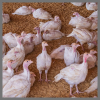
Iron is routinely supplemented in broiler feeds to prevent possible dietary deficiencies. We carried out an experiment with the objective of evaluating the Fe requirements of broilers fed with the exogenous enzyme phytase.
Read more
-

Oct
05
Interpretive Summary: Dietary lysolecithin supplementation improves growth performance of weaned piglets via improving nutrients absorption, lipid metabolism, and redox status
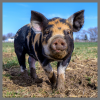
Early weaning has been widely adopted to maximize productivity for swine production. However, the weaned piglets suffer from insufficient energy intake due to the reduced feed intake caused by weaning stress, which compromises the growth rate of piglets.
Read more
-

Oct
05
Interpretive Summary: Influence of handling in corrals on the temperament of different breeds of beef cattle raised in Brazil

Some scientific studies have shown the negative effect of poor handling on the welfare and temperament of animals. Furthermore, there is evidence that more reactive cattle present the highest blood cortisol concentrations indicative of stress.
Read more
-

Oct
05
Interpretive Summary: A comparative study on feeding timing and additive types of broilers in a high-temperature environment
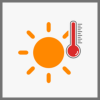
The increasing frequency of exposure to high-temperature environments has prompted research into nutritional approaches to alleviate heat stress in chickens, but little research has been reported on feeding timing. The aim of this study was to determine the effect of feeding timing on the effectiveness of the natural antioxidants vitamin C (VC) and green tea extract (GTE).
Read more
-

Oct
05
Interpretive Summary: Short communication: commercial diets for pigs in the United States contain more calcium than formulated
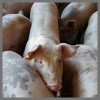
Calcium is often oversupplied in pig diets because limestone, the main source of Ca in pig diets, is an inexpensive feed ingredient and is often used as a carrier in premixes or a diluent in feed ingredients. However, excess Ca may be detrimental to P digestibility and pig growth performance.
Read more
-

Oct
05
Interpretive Summary: The effects of timing of high immune response phenotyping in relation to weaning on immune responses of crossbred beef calves
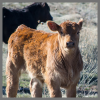
Understanding the optimal time to immunophenotype beef calves is important for the accurate estimation of their genetic ability to resist disease. The compound stressors experienced by a calf during weaning may have a similar impact on the immune system as chronic stress.
Read more
-

Sep
28
Interpretive Summary: EPA rejects environmental activist’s petitions
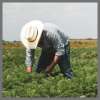
The United States Environmental Protection Agency (EPA) has rejected two petitions sponsored by environmental agencies that would potentially have a negative impact on American farmers and ranchers. The petitions regarded revising the Clean Water Act regulations for the National Pollutant Discharge Elimination System (NPDES) Concentrated Animal Feeding Operations (CAFOs) program.
Read more
-

Sep
28
Interpretive Summary: EPA releases revised WOTUS rule

The United States Environmental Protection Agency (EPA) and the Department of the Army have issued a final rule regarding the Waters of the United States Rule (WOTUS). This announcement comes on the heels of the Supreme Court’s May 2023 decision in the Sackett v. EPA case, which overturned portions of the WOTUS rule.
Read more
-

Sep
28
Interpretive Summary: FMMO hearings begin
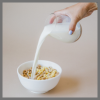
The Federal Milk Marketing Order (FMMO) Pricing Formula hearings, held by the United States Department of Agriculture (USDA) began last month. The USDA will hold a hearing on proposals to amend the pricing formulas in the 11 FMMOs. Each FMMO includes a classified price plan, a system of minimum prices, terms of the order, and provisions for administering the order.
Read more
-

Sep
28
Interpretive Summary: Governors send letter regarding Farm Bill

The National Governors Association has sent a letter to the Agriculture Committee leaders in the House and Senate, expressing their wishes for the Farm Bill. The National Governors Association assembled a task force to compile the key priorities for their states and believe their priorities highlight the important role farm bill programs play in strengthening communities.
Read more
-

Sep
28
Interpretive Summary: Senators send letter to the FDA over lab-grown dairy
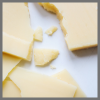
A group of bipartisan Senators, led by Senator Tammy Baldwin (D-WI) and Senator Jim Risch (R-ID) sent a letter to the United States Food and Drug Administration (FDA), over concerns for lab-grown dairy. The letter expresses deep concern that the FDA is allowing non-dairy lab-grown products to be illegally labeled with dairy terms.
Read more
-

Sep
28
Interpretive Summary: The Livestock Consolidation Research Act introduced
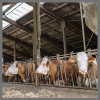
A new bill that would direct the United States Department of Agriculture (USDA) to research how consolidation of livestock producers impacts the industry and consumers, has been introduced by United States House Representatives Randy Feenstra (R-IA) and Elissa Slotkin (D-MI). A companion version of The Livestock Consolidation Research Act was introduced into the Senate by Senators Tina Smith (D-MN) and Chuck Grassley (R-IA).
Read more
-

Sep
28
Interpretive Summary: Third party resolution needed for US and Mexico corn dispute
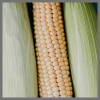
United States Trade Representative Katherine Tai announced that the United States is seeking a dispute settlement panel the United States-Mexico-Canada Agreement (USMCA) regarding Mexico’s biotechnology corn measures. The United States is in an ongoing disagreement with Mexico over the February 2023 decree, banning the use of biotech corn in tortillas or dough, and the instruction to Mexican government agencies to gradually phase out the use of biotech corn in all products for human consumption and for animal feed.
Read more
-

Sep
28
Interpretive Summary: USDA awards small business owners and farmers

The United States Department of Agriculture (USDA) has announced over $265 million in awards to help small business owners, farmers, and ranchers lower their energy costs, create income, and expand operations. The awards are provided through President Biden’s Inflation Reduction Act and the Rural Energy for America Program (REAP), as part of the Investing in America Agenda.
Read more
-

Sep
28
Interpretive Summary: USDA gives 65 million dollars in conservation grants

The United States Department of Agriculture (USDA) has announced $65 million through the Conservation Innovation Grant (CIG) Program. The funds will support two programs, designed to provide new tools, approaches, practices, and technologies to further natural resource conservation on private lands.
Read more
-

Sep
21
Interpretive Summary: Predicting dry matter intake in beef cattle
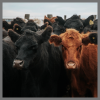
In animal agriculture, passive monitoring technology has the potential to lead to needed innovations as we look for solutions to make global food production more resilient. Here, we use passive intake systems to measure daily weight, water intake, and climatic variables to accurately predict dry matter intake.
Read more
-

Sep
21
Interpretive Summary: A Clinical Trial on the Welfare Effects of Administering Meloxicam to 10 to 21 Day Dairy Calves Following Caustic Paste Disbudding
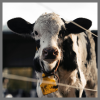
Caustic paste disbudding (CPD) is a widely used practice in the cattle industry, yet there is a shortage of literature on the effects of meloxicam on calves aged 10 to 21 d who have undergone this procedure. In this clinical trial, we conducted a comparative analysis of the pain-related behavioral, physiological, and hematological performance of calves that were administered with either lidocaine plus normal saline (n = 15) or lidocaine plus meloxicam (n = 15) before undergoing disbudding operations.
Read more
-

Sep
21
Interpretive Summary: Postpartum meloxicam administration to sows but not split-suckling increases piglet growth and reduces clinical incidence of disease in suckling piglets
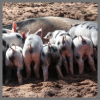
Suckling pigs should receive ≥200 g of colostrum (the first secretion of the mammary gland after giving birth) within the first 24 h of life. This is challenging to achieve as the number of piglets born alive has increased over the last decade, but the sow’s ability to produce colostrum has not increased.
Read more
-

Sep
21
Interpretive Summary: Short communication: evaluation of an endotoxin challenge and intraruminal bacterial inoculation model to induce liver abscesses in Holstein steers
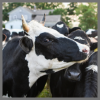
Liver abscesses in feedlot cattle can cause a decrease in feed intake, average daily gain, feed efficiency, and hot carcass weight. At harvest, liver abscesses result in liver condemnations, carcass trimming, and a potential decrease in quality grade, with an estimated economic cost to packers of $41.6 million annually.
Read more
 OctWriting Workshop September 2023
OctWriting Workshop September 2023 ASAS hosted the first of two annual Writing workshops last week in Hollywood Beach, FL. The conference attendees were 25 ASAS member graduate students and young scientists from 12 different schools and agencies in the US and Canada.
ASAS hosted the first of two annual Writing workshops last week in Hollywood Beach, FL. The conference attendees were 25 ASAS member graduate students and young scientists from 12 different schools and agencies in the US and Canada. OctInterpretive Summary: Iron requirements of broiler chickens as affected by supplemental phytase
OctInterpretive Summary: Iron requirements of broiler chickens as affected by supplemental phytase Iron is routinely supplemented in broiler feeds to prevent possible dietary deficiencies. We carried out an experiment with the objective of evaluating the Fe requirements of broilers fed with the exogenous enzyme phytase.
Iron is routinely supplemented in broiler feeds to prevent possible dietary deficiencies. We carried out an experiment with the objective of evaluating the Fe requirements of broilers fed with the exogenous enzyme phytase. OctInterpretive Summary: Dietary lysolecithin supplementation improves growth performance of weaned piglets via improving nutrients absorption, lipid metabolism, and redox status
OctInterpretive Summary: Dietary lysolecithin supplementation improves growth performance of weaned piglets via improving nutrients absorption, lipid metabolism, and redox status Early weaning has been widely adopted to maximize productivity for swine production. However, the weaned piglets suffer from insufficient energy intake due to the reduced feed intake caused by weaning stress, which compromises the growth rate of piglets.
Early weaning has been widely adopted to maximize productivity for swine production. However, the weaned piglets suffer from insufficient energy intake due to the reduced feed intake caused by weaning stress, which compromises the growth rate of piglets. OctInterpretive Summary: Influence of handling in corrals on the temperament of different breeds of beef cattle raised in Brazil
OctInterpretive Summary: Influence of handling in corrals on the temperament of different breeds of beef cattle raised in Brazil Some scientific studies have shown the negative effect of poor handling on the welfare and temperament of animals. Furthermore, there is evidence that more reactive cattle present the highest blood cortisol concentrations indicative of stress.
Some scientific studies have shown the negative effect of poor handling on the welfare and temperament of animals. Furthermore, there is evidence that more reactive cattle present the highest blood cortisol concentrations indicative of stress. OctInterpretive Summary: A comparative study on feeding timing and additive types of broilers in a high-temperature environment
OctInterpretive Summary: A comparative study on feeding timing and additive types of broilers in a high-temperature environment The increasing frequency of exposure to high-temperature environments has prompted research into nutritional approaches to alleviate heat stress in chickens, but little research has been reported on feeding timing. The aim of this study was to determine the effect of feeding timing on the effectiveness of the natural antioxidants vitamin C (VC) and green tea extract (GTE).
The increasing frequency of exposure to high-temperature environments has prompted research into nutritional approaches to alleviate heat stress in chickens, but little research has been reported on feeding timing. The aim of this study was to determine the effect of feeding timing on the effectiveness of the natural antioxidants vitamin C (VC) and green tea extract (GTE). OctInterpretive Summary: Short communication: commercial diets for pigs in the United States contain more calcium than formulated
OctInterpretive Summary: Short communication: commercial diets for pigs in the United States contain more calcium than formulated Calcium is often oversupplied in pig diets because limestone, the main source of Ca in pig diets, is an inexpensive feed ingredient and is often used as a carrier in premixes or a diluent in feed ingredients. However, excess Ca may be detrimental to P digestibility and pig growth performance.
Calcium is often oversupplied in pig diets because limestone, the main source of Ca in pig diets, is an inexpensive feed ingredient and is often used as a carrier in premixes or a diluent in feed ingredients. However, excess Ca may be detrimental to P digestibility and pig growth performance. OctInterpretive Summary: The effects of timing of high immune response phenotyping in relation to weaning on immune responses of crossbred beef calves
OctInterpretive Summary: The effects of timing of high immune response phenotyping in relation to weaning on immune responses of crossbred beef calves Understanding the optimal time to immunophenotype beef calves is important for the accurate estimation of their genetic ability to resist disease. The compound stressors experienced by a calf during weaning may have a similar impact on the immune system as chronic stress.
Understanding the optimal time to immunophenotype beef calves is important for the accurate estimation of their genetic ability to resist disease. The compound stressors experienced by a calf during weaning may have a similar impact on the immune system as chronic stress. SepInterpretive Summary: EPA rejects environmental activist’s petitions
SepInterpretive Summary: EPA rejects environmental activist’s petitions The United States Environmental Protection Agency (EPA) has rejected two petitions sponsored by environmental agencies that would potentially have a negative impact on American farmers and ranchers. The petitions regarded revising the Clean Water Act regulations for the National Pollutant Discharge Elimination System (NPDES) Concentrated Animal Feeding Operations (CAFOs) program.
The United States Environmental Protection Agency (EPA) has rejected two petitions sponsored by environmental agencies that would potentially have a negative impact on American farmers and ranchers. The petitions regarded revising the Clean Water Act regulations for the National Pollutant Discharge Elimination System (NPDES) Concentrated Animal Feeding Operations (CAFOs) program. SepInterpretive Summary: EPA releases revised WOTUS rule
SepInterpretive Summary: EPA releases revised WOTUS rule The United States Environmental Protection Agency (EPA) and the Department of the Army have issued a final rule regarding the Waters of the United States Rule (WOTUS). This announcement comes on the heels of the Supreme Court’s May 2023 decision in the Sackett v. EPA case, which overturned portions of the WOTUS rule.
The United States Environmental Protection Agency (EPA) and the Department of the Army have issued a final rule regarding the Waters of the United States Rule (WOTUS). This announcement comes on the heels of the Supreme Court’s May 2023 decision in the Sackett v. EPA case, which overturned portions of the WOTUS rule. SepInterpretive Summary: FMMO hearings begin
SepInterpretive Summary: FMMO hearings begin The Federal Milk Marketing Order (FMMO) Pricing Formula hearings, held by the United States Department of Agriculture (USDA) began last month. The USDA will hold a hearing on proposals to amend the pricing formulas in the 11 FMMOs. Each FMMO includes a classified price plan, a system of minimum prices, terms of the order, and provisions for administering the order.
The Federal Milk Marketing Order (FMMO) Pricing Formula hearings, held by the United States Department of Agriculture (USDA) began last month. The USDA will hold a hearing on proposals to amend the pricing formulas in the 11 FMMOs. Each FMMO includes a classified price plan, a system of minimum prices, terms of the order, and provisions for administering the order. SepInterpretive Summary: Governors send letter regarding Farm Bill
SepInterpretive Summary: Governors send letter regarding Farm Bill The National Governors Association has sent a letter to the Agriculture Committee leaders in the House and Senate, expressing their wishes for the Farm Bill. The National Governors Association assembled a task force to compile the key priorities for their states and believe their priorities highlight the important role farm bill programs play in strengthening communities.
The National Governors Association has sent a letter to the Agriculture Committee leaders in the House and Senate, expressing their wishes for the Farm Bill. The National Governors Association assembled a task force to compile the key priorities for their states and believe their priorities highlight the important role farm bill programs play in strengthening communities. SepInterpretive Summary: Senators send letter to the FDA over lab-grown dairy
SepInterpretive Summary: Senators send letter to the FDA over lab-grown dairy A group of bipartisan Senators, led by Senator Tammy Baldwin (D-WI) and Senator Jim Risch (R-ID) sent a letter to the United States Food and Drug Administration (FDA), over concerns for lab-grown dairy. The letter expresses deep concern that the FDA is allowing non-dairy lab-grown products to be illegally labeled with dairy terms.
A group of bipartisan Senators, led by Senator Tammy Baldwin (D-WI) and Senator Jim Risch (R-ID) sent a letter to the United States Food and Drug Administration (FDA), over concerns for lab-grown dairy. The letter expresses deep concern that the FDA is allowing non-dairy lab-grown products to be illegally labeled with dairy terms. SepInterpretive Summary: The Livestock Consolidation Research Act introduced
SepInterpretive Summary: The Livestock Consolidation Research Act introduced A new bill that would direct the United States Department of Agriculture (USDA) to research how consolidation of livestock producers impacts the industry and consumers, has been introduced by United States House Representatives Randy Feenstra (R-IA) and Elissa Slotkin (D-MI). A companion version of The Livestock Consolidation Research Act was introduced into the Senate by Senators Tina Smith (D-MN) and Chuck Grassley (R-IA).
A new bill that would direct the United States Department of Agriculture (USDA) to research how consolidation of livestock producers impacts the industry and consumers, has been introduced by United States House Representatives Randy Feenstra (R-IA) and Elissa Slotkin (D-MI). A companion version of The Livestock Consolidation Research Act was introduced into the Senate by Senators Tina Smith (D-MN) and Chuck Grassley (R-IA). SepInterpretive Summary: Third party resolution needed for US and Mexico corn dispute
SepInterpretive Summary: Third party resolution needed for US and Mexico corn dispute United States Trade Representative Katherine Tai announced that the United States is seeking a dispute settlement panel the United States-Mexico-Canada Agreement (USMCA) regarding Mexico’s biotechnology corn measures. The United States is in an ongoing disagreement with Mexico over the February 2023 decree, banning the use of biotech corn in tortillas or dough, and the instruction to Mexican government agencies to gradually phase out the use of biotech corn in all products for human consumption and for animal feed.
United States Trade Representative Katherine Tai announced that the United States is seeking a dispute settlement panel the United States-Mexico-Canada Agreement (USMCA) regarding Mexico’s biotechnology corn measures. The United States is in an ongoing disagreement with Mexico over the February 2023 decree, banning the use of biotech corn in tortillas or dough, and the instruction to Mexican government agencies to gradually phase out the use of biotech corn in all products for human consumption and for animal feed. SepInterpretive Summary: USDA awards small business owners and farmers
SepInterpretive Summary: USDA awards small business owners and farmers The United States Department of Agriculture (USDA) has announced over $265 million in awards to help small business owners, farmers, and ranchers lower their energy costs, create income, and expand operations. The awards are provided through President Biden’s Inflation Reduction Act and the Rural Energy for America Program (REAP), as part of the Investing in America Agenda.
The United States Department of Agriculture (USDA) has announced over $265 million in awards to help small business owners, farmers, and ranchers lower their energy costs, create income, and expand operations. The awards are provided through President Biden’s Inflation Reduction Act and the Rural Energy for America Program (REAP), as part of the Investing in America Agenda. SepInterpretive Summary: USDA gives 65 million dollars in conservation grants
SepInterpretive Summary: USDA gives 65 million dollars in conservation grants The United States Department of Agriculture (USDA) has announced $65 million through the Conservation Innovation Grant (CIG) Program. The funds will support two programs, designed to provide new tools, approaches, practices, and technologies to further natural resource conservation on private lands.
The United States Department of Agriculture (USDA) has announced $65 million through the Conservation Innovation Grant (CIG) Program. The funds will support two programs, designed to provide new tools, approaches, practices, and technologies to further natural resource conservation on private lands. SepInterpretive Summary: Predicting dry matter intake in beef cattle
SepInterpretive Summary: Predicting dry matter intake in beef cattle In animal agriculture, passive monitoring technology has the potential to lead to needed innovations as we look for solutions to make global food production more resilient. Here, we use passive intake systems to measure daily weight, water intake, and climatic variables to accurately predict dry matter intake.
In animal agriculture, passive monitoring technology has the potential to lead to needed innovations as we look for solutions to make global food production more resilient. Here, we use passive intake systems to measure daily weight, water intake, and climatic variables to accurately predict dry matter intake. SepInterpretive Summary: A Clinical Trial on the Welfare Effects of Administering Meloxicam to 10 to 21 Day Dairy Calves Following Caustic Paste Disbudding
SepInterpretive Summary: A Clinical Trial on the Welfare Effects of Administering Meloxicam to 10 to 21 Day Dairy Calves Following Caustic Paste Disbudding Caustic paste disbudding (CPD) is a widely used practice in the cattle industry, yet there is a shortage of literature on the effects of meloxicam on calves aged 10 to 21 d who have undergone this procedure. In this clinical trial, we conducted a comparative analysis of the pain-related behavioral, physiological, and hematological performance of calves that were administered with either lidocaine plus normal saline (n = 15) or lidocaine plus meloxicam (n = 15) before undergoing disbudding operations.
Caustic paste disbudding (CPD) is a widely used practice in the cattle industry, yet there is a shortage of literature on the effects of meloxicam on calves aged 10 to 21 d who have undergone this procedure. In this clinical trial, we conducted a comparative analysis of the pain-related behavioral, physiological, and hematological performance of calves that were administered with either lidocaine plus normal saline (n = 15) or lidocaine plus meloxicam (n = 15) before undergoing disbudding operations. SepInterpretive Summary: Postpartum meloxicam administration to sows but not split-suckling increases piglet growth and reduces clinical incidence of disease in suckling piglets
SepInterpretive Summary: Postpartum meloxicam administration to sows but not split-suckling increases piglet growth and reduces clinical incidence of disease in suckling piglets Suckling pigs should receive ≥200 g of colostrum (the first secretion of the mammary gland after giving birth) within the first 24 h of life. This is challenging to achieve as the number of piglets born alive has increased over the last decade, but the sow’s ability to produce colostrum has not increased.
Suckling pigs should receive ≥200 g of colostrum (the first secretion of the mammary gland after giving birth) within the first 24 h of life. This is challenging to achieve as the number of piglets born alive has increased over the last decade, but the sow’s ability to produce colostrum has not increased. SepInterpretive Summary: Short communication: evaluation of an endotoxin challenge and intraruminal bacterial inoculation model to induce liver abscesses in Holstein steers
SepInterpretive Summary: Short communication: evaluation of an endotoxin challenge and intraruminal bacterial inoculation model to induce liver abscesses in Holstein steers Liver abscesses in feedlot cattle can cause a decrease in feed intake, average daily gain, feed efficiency, and hot carcass weight. At harvest, liver abscesses result in liver condemnations, carcass trimming, and a potential decrease in quality grade, with an estimated economic cost to packers of $41.6 million annually.
Liver abscesses in feedlot cattle can cause a decrease in feed intake, average daily gain, feed efficiency, and hot carcass weight. At harvest, liver abscesses result in liver condemnations, carcass trimming, and a potential decrease in quality grade, with an estimated economic cost to packers of $41.6 million annually.



